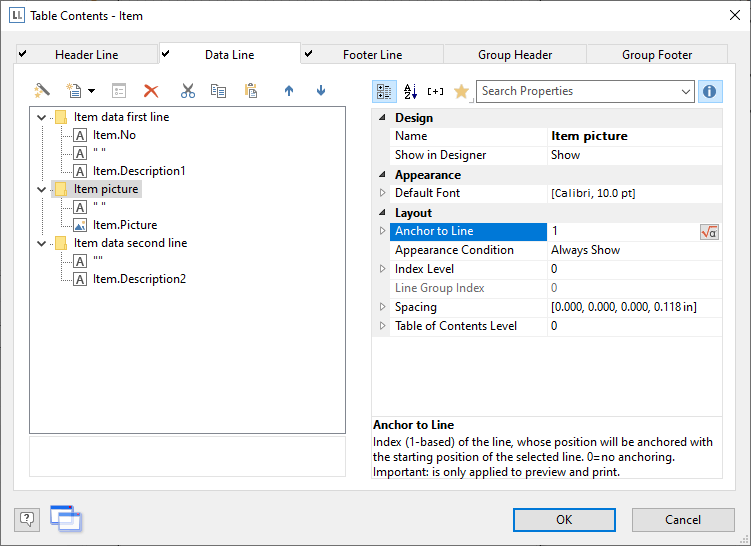
Let us assume that you want to output the contents of a column across two lines. You can achieve this by anchoring two lines to each other via the line property "Anchor to row" (Index (1-based) of the row; 0=no anchoring). So the beginning of the next line definition will be forced to the beginning or the end of another line definition. Hence the cells can overlap.
Note: This function is not supported by all export formats.

Figure 5.32: Anchor data lines
Let’s assume that you want to create 2 lines next to an image column:
1. Define in the first line with 3 columns: "Item.No" (column width 30), empty content, a space (column width 30), "Item.Description" (column width 90).
2. Define 2 columns in the second line: empty content, "Item.Picture" (both column width 30). in the line properties set the property "Anchor to Line" to "1" to chain it to the first line definition. For "Anchor" select "Top".
3. Define in the third line also 2 columns: empty content (column width 60), "Item.Description2" (column width 90). In the line properties set the property "Anchor to Line" also to "1" and "Anchor" to "Bottom".
4. Thus, the second line is printed in the same starting position as the first line and the cells may overlap:

Figure 5.33: Column contents across two lines